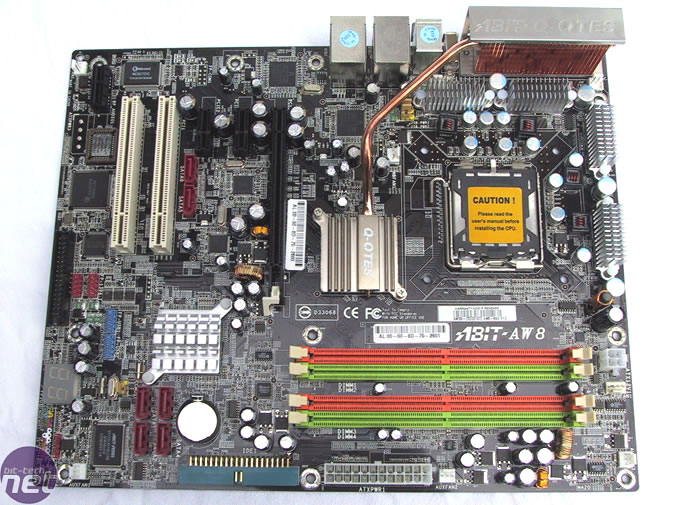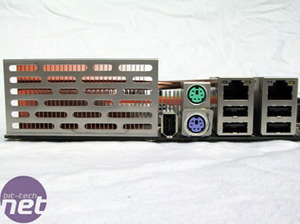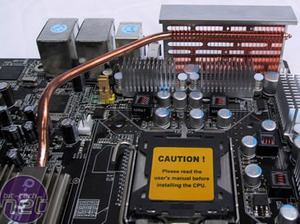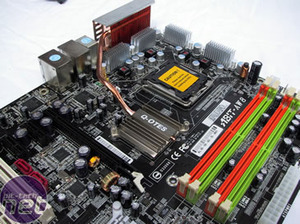
It works remarkably effectively despite the length of the heat-pipe; however because of the size of the copper fins you do sacrifice the legacy parallel and serial ports and the audio has been moved to a daughter card. If you’re watercooling the CPU, or your CPU heatsink is designed so that it doesn’t push air out the back of your case you could find a problem with it overheating.


The black coloured PCB is set against some colourful components like the red SATA ports and alternating green and orange DDR2 sockets, with each colour representing a channel for a pair of DIMMs. The blue USB pins are differentiated against the Firewire pins so you shouldn’t get confused if you’re not one to refer to the manual, and the front panel pins are colour co-ordinated and clearly marked.

ABIT include no less than 8 sets of fan pins; one 4 pin for the CPU and seven 3 pins! We’d recommend using a 24-pin power supply and mid to low wattage fans if you were going to use them all so as not to overload the board.

MSI MPG Velox 100R Chassis Review
October 14 2021 | 15:04






Want to comment? Please log in.